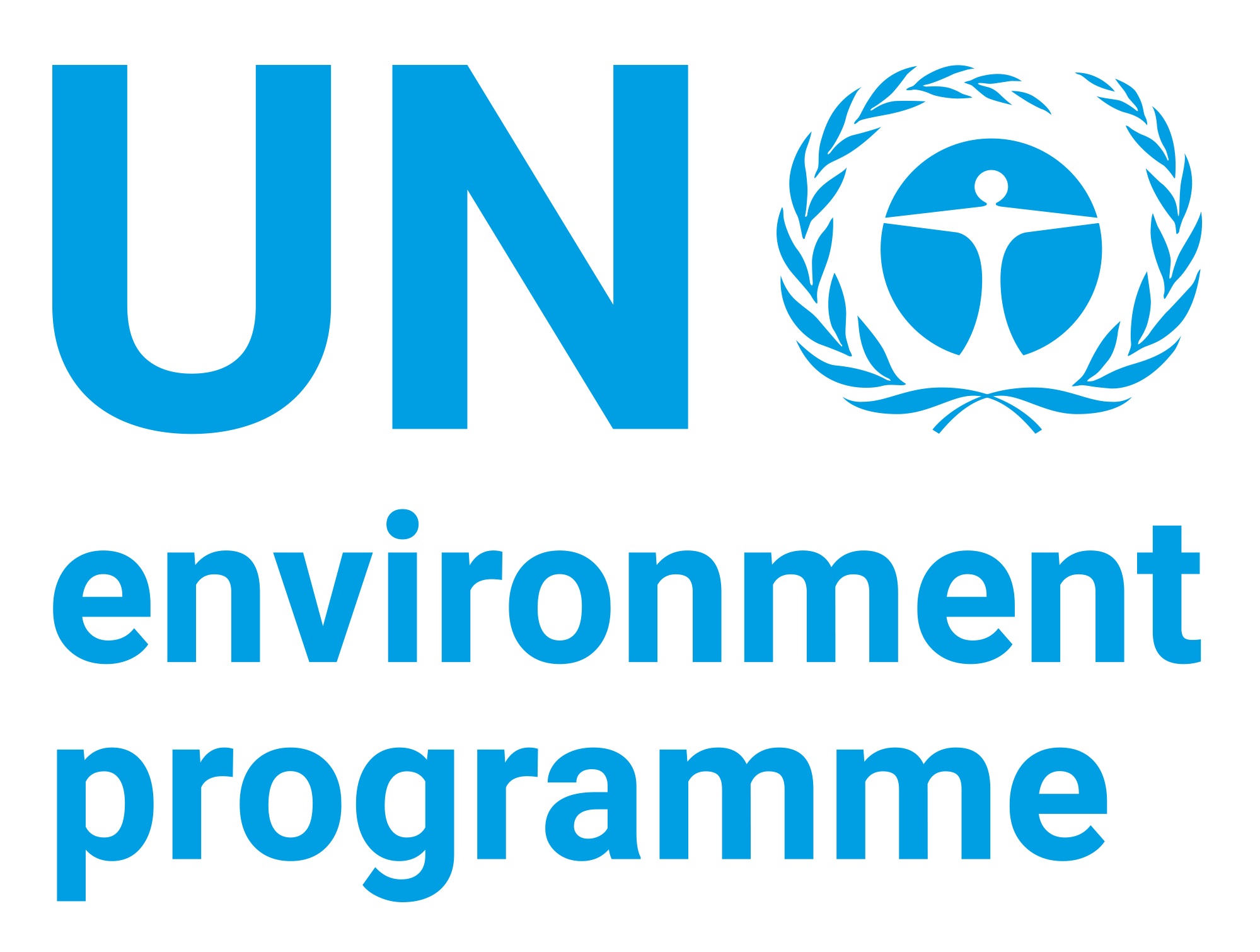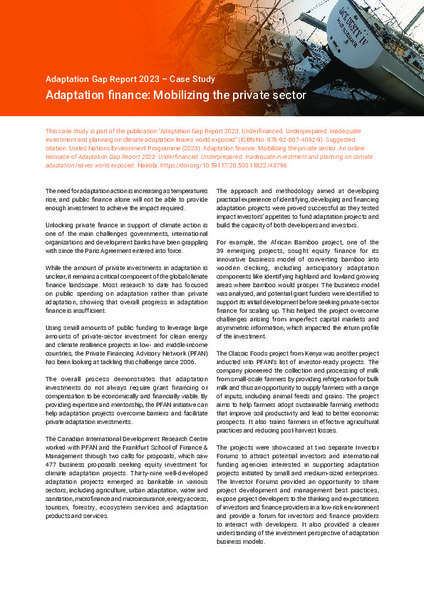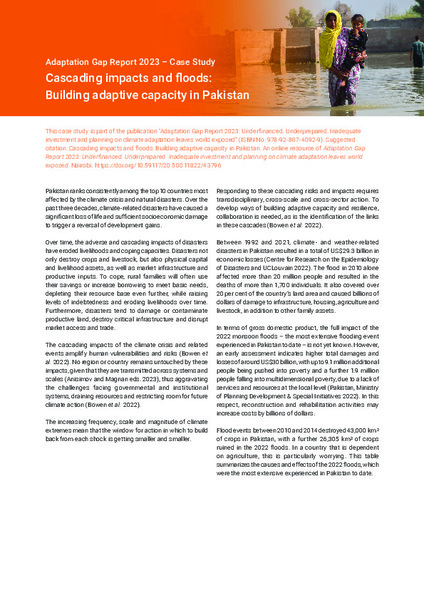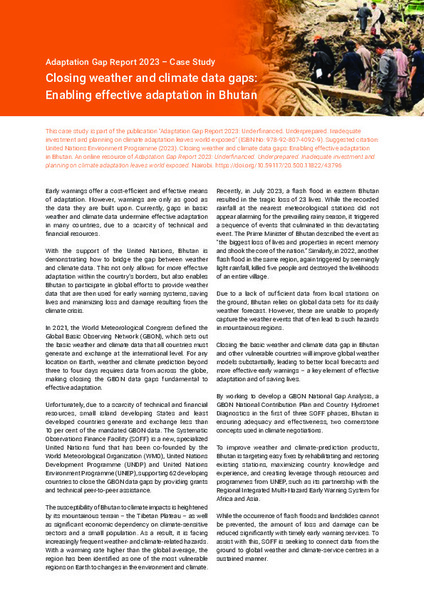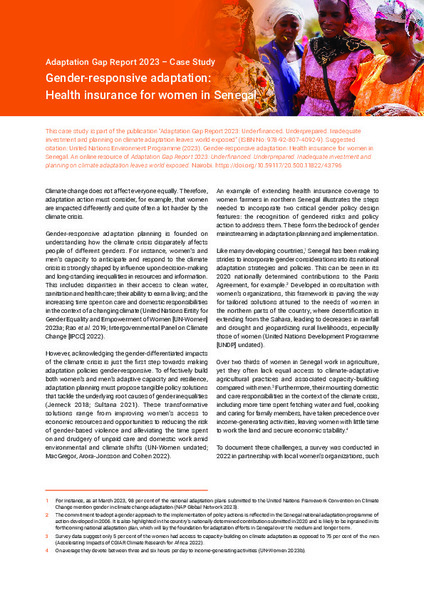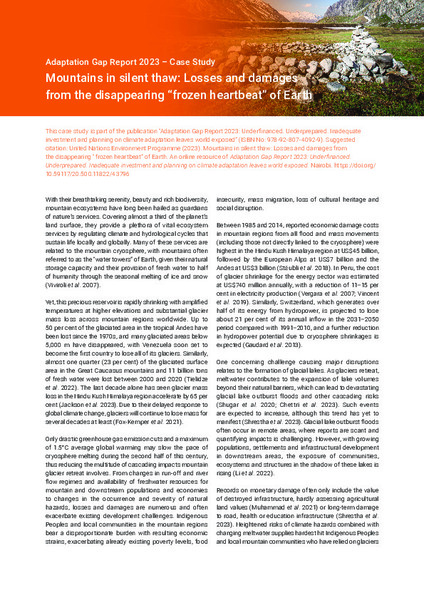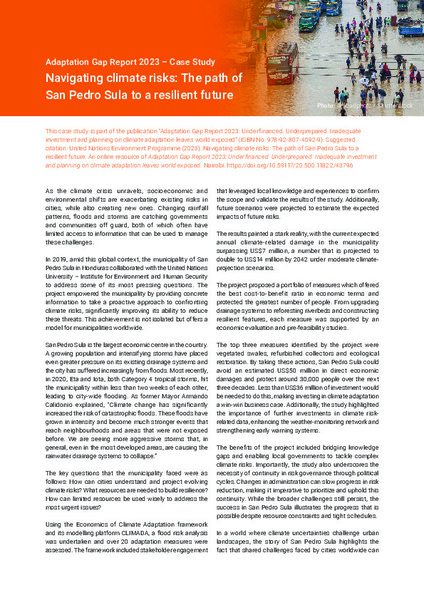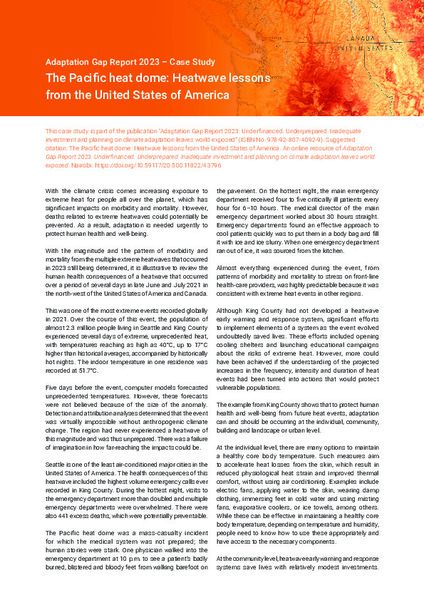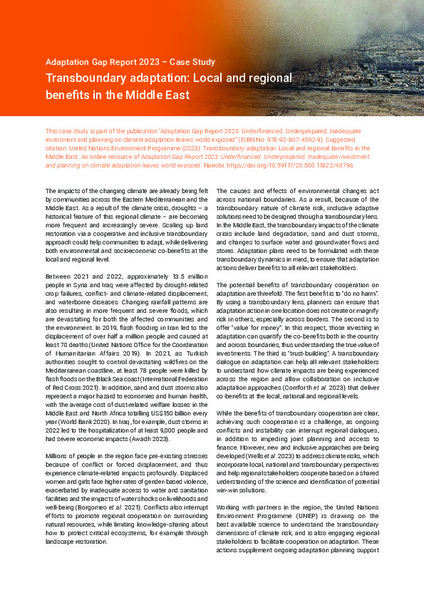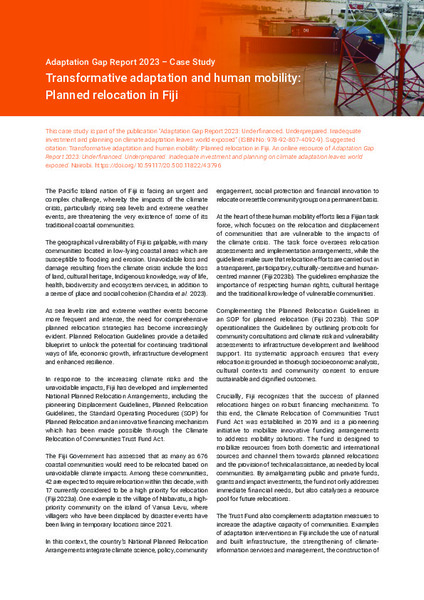Browsing Institutional Series by Subject "case study"
Now showing items 1-11 of 11
-
Adaptation finance: Mobilizing the private sector - Adaptation Gap Report 2023 – Case Study
(2023-11)Unlocking private finance in support of climate action is one of the main challenges governments, international organizations and development banks have been grappling with since the Paris Agreement entered into force. This ... -
Cascading impacts and floods: Building adaptive capacity in Pakistan - Adaptation Gap Report 2023 – Case Study
(2023-11)Pakistan ranks consistently among the top 10 countries most affected by the climate crisis and natural disasters. Responding to these cascading risks and impacts requires transdisciplinary, cross‑scale and cross‑sector ... -
Closing weather and climate data gaps: Enabling effective adaptation in Bhutan - Adaptation Gap Report 2023 – Case Study
(2023-11)Closing the basic weather and climate data gap in Bhutan and other vulnerable countries will improve global weather models substantially, leading to better local forecasts and more effective early warnings – a key element ... -
Ecosystem-based adaptation: Rice farming in Cambodia and Madagascar - Adaptation Gap Report 2023 – Case Study
(2023-11)Rice production is under immense pressure from the increasing impacts of the climate crisis in Madagascar and Cambodia – two countries that are heavily reliant on rice cultivation for food security and economic ... -
Gender-responsive adaptation: Health insurance for women in Senegal - Adaptation Gap Report 2023 – Case Study
(2023-11)An example of extending health insurance coverage to women farmers in northern Senegal illustrates the steps needed to incorporate two critical gender policy design features: the recognition of gendered risks and policy ... -
Health-related loss and damage: Lessons from the Caribbean - Adaptation Gap Report 2023 – Case Study
(2023-11)Embedding health as a cross-cutting consideration in international climate and development frameworks will enable much-needed technical and financial resources and policy coherence in responding to loss and damage. This ... -
Mountains in silent thaw: Losses and damages from the disappearing “frozen heartbeat” of Earth - Adaptation Gap Report 2023 – Case Study
(2023-11)With their breathtaking serenity, beauty and rich biodiversity, mountain ecosystems have long been hailed as guardians of nature’s services. Covering almost a third of the planet’s land surface, they provide a plethora of ... -
Navigating climate risks: The path of San Pedro Sula to a resilient future - Adaptation Gap Report 2023 – Case Study
(2023-11)In 2019, the municipality of San Pedro Sula in Honduras collaborated with the United Nations University – Institute for Environment and Human Security to address some of its most pressing questions. The project empowered ... -
The Pacific heat dome: Heatwave lessons from the United States of America - Adaptation Gap Report 2023 – Case Study
(2023-11)With the magnitude and the pattern of morbidity and mortality from the multiple extreme heatwaves that occurred in 2023 still being determined, it is illustrative to review the human health consequences of a heatwave that ... -
Transboundary adaptation: Local and regional benefits in the Middle East - Adaptation Gap Report 2023 – Case Study
(2023-11)The impacts of the changing climate are already being felt by communities across the Eastern Mediterranean and the Middle East. As a result of the climate crisis, droughts – a historical feature of this regional climate – ... -
Transformative adaptation and human mobility: Planned relocation in Fiji - Adaptation Gap Report 2023 – Case Study
(2023-11)In response to the increasing climate risks and the unavoidable impacts, Fiji has developed and implemented National Planned Relocation Arrangements, including the pioneering Displacement Guidelines, Planned Relocation ...
